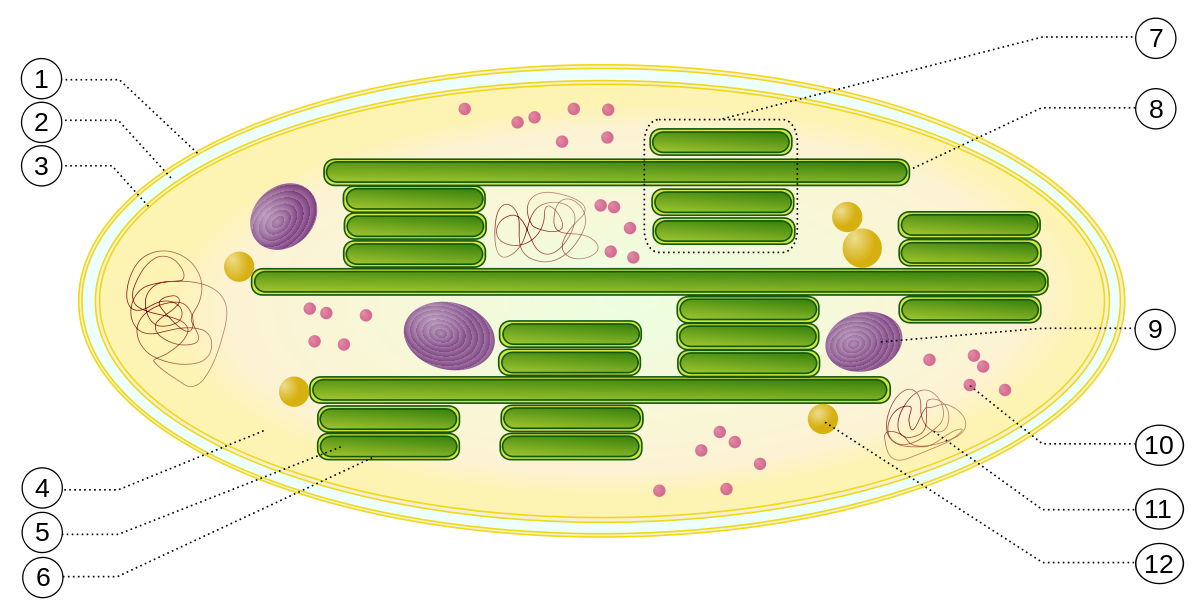Effect of Defects¶
Defects¶

Fig. 29 Defects on a 1D chain
The Smoluchowski Equation describes the distribution of particles in a continuous potential. Here we discuss the distribution of particles in on a chain with defects.
A defect on a chain is a site that captures the walker with a certain probability, as shown in Fig. 29. The master equation that describes the distribution is
where \(C\) is the capture rate at the site of defect.
Similar to any other master equations, the (28) is a set of coupled first order differential equations. To solve (28), we consider the following equation
The solution to the above equation when \(\alpha\) is constant, which is
If we introduce time dependencies for \(\alpha\), we get an extra term \(e^{-\int_{t'}^t ds \alpha(s)}\).
Green’s function
The general solution to any first order differential equation is
If \(\alpha\) is constant, we use Laplace transform to solve it. Otherwise it is much easier to introduce the Green’s function.
We reformulate the problem to include the initial condition,
The solution is
where the Green’s function \(G(t\vert \xi)\) is defined by
In this specific case, Green function is
where \(H\) is the Heaviside function.
For first order differential equations, it is much easier to use the general solution
where \(\mu(t) := e^{\int \alpha(t') dt'}\).
However, when dealing with more complicate differential equations, the Green’s function method becomes more useful and intuitive. Green’s function represents the impulse response of the dynamical system.
More about Green’s function, for example, the solution to second order inhomogeneous equation, is found in Green’s Function.
A more general problem is a time dependent source \(g_m(t)\) in the master equation,
The formal solution is
However, the solution is still coupled to other sites. We apply Fourier transform on it to detangle the spatial coupling,
To simplify the result, Laplace transform is used,
Laplace Transform
Laplace transform is a transform of a function \(f(t)\) to a function of \(s\) through
Some useful properties of Laplace transform are listed below.
- \(L[\frac{d}{dt}f(t)] = s L[f(t)] - f(0)\);
- \(L[\frac{d^2}{dt^2}f(t) = s^2 L[f(t)] - s f(0) - \frac{d f(0)}{dt}\);
- \(L[\int_0^t g(\tau) d\tau ] = \frac{L[f(t)]}{s}\);
- \(L[\alpha t] = \frac{1}{\alpha} L[s/\alpha]\);
- \(L[e^{at}f(t)] = L[f(s-a)]\);
- \(L[tf(t)] = - \frac{d}{ds} L[f(t)]\).
Some useful results of Laplace transform on some simple functions are calculated.
- \(L[1] = \frac{1}{s}\);
- \(L[\delta] = 1\);
- \(L[\delta^k] = s^k\);
- \(L[t] = \frac{1}{s^2}\);
- \(L[e^{at}]= \frac{1}[s-a]\).
More on Laplace transform is in Laplace Transform.
Transform back into real space,
To get the solution to (28), we simply define
and plugin it back into (29), we get
In fact, we haven’t solved the equation. The solution (30) is merely a formal solution. The right hand side still depends on the probabillity.
If we set \(m=r\), we get remove the dependencis of the mth mode,
From which, we fine the solution to the rth component is,
The rth mode is then combined with (30),
Take the limits to check the properties.
Motion limit is given by
\[\frac{1}{C} \ll \tilde \Pi_0 .\]In this case, \(\tilde P_m \to \tilde \eta_m - \frac{\tilde \Pi_{m-r} \tilde \eta_r}{\tilde \Pi_0}\). In this limit, the propagator decreases with time so fast that it becomes small enough to be neglected. The survival probability is dominated by motion not the capture.
Capture limit is given by
\[\frac{1}{C} \gg \tilde \Pi_0 .\]In this limit, the survival probability is dominated by capture, \(\tilde P_m \to \tilde \eta_m\).
Numerical Solution
Numerical solution to this is straight forward.
A Brief Summary of the Effect of Defect
The master equation is
The propagator, aka the Green’s function, is \(\Pi_{m-n}(t,t_0)\). Apply Laplace transform,
Substitute of \(m\) with \(r\), we get
This result is then plugged back to the solution, the final solution becomes
The survival probability is defined as
Then we can find out its Laplace transform, which is
Survival Probability¶
The survival probability of a particle is the summation of the probabilities at all the sites,
i.e.,
Looking through the table of Laplace transform,
The survival probability is then calculated as
in which
Hint
The Laplace transform of propagator is
which is actually decreasing when \(\Pi_0\) is a constant.
Photosynthesis¶

Fig. 30 Captions are here on wikipedia. Chloroplast ultrastructure: 1. outer membrane 2. intermembrane space 3. inner membrane (1+2+3: envelope) 4. stroma (aqueous fluid) 5. thylakoid lumen (inside of thylakoid) 6. thylakoid membrane 7. granum (stack of thylakoids) 8. thylakoid (lamella) 9. starch 10. ribosome 11. plastidial DNA 12. plastoglobule (drop of lipids)
The obsorbed energy of photons follows a random walk in the chloroplast until it hits on a reaction center. On the other hand, the photons can also be emited after some time. The whole process is a master equation of the form
where the last term \(\frac{P_m}{\tau}\) is describes the emission.
What the experimentalists are interested in is a quantity called quantum yield, which is defined as
Without the reaction,
Assume the survival probability to have the following form
(31) becomes,
The quantum yield is
The integrals are complex. Forturnatedly, the inverse Laplace transform is not needed since
Define the quantities without traps to be the prime quantities. We define a new quantity
\(\bar P_m\) reduces the master equation to the case without emissions which has already been solved,
Finally, the survival probability with traps is
Integrate over time \(t\),
This result simplifies our calculation because the survival probability in the case of traps is not needed with Laplace transform of \(Q(t)\),
We have
The initial condition is used in \(\tilde \eta (\epsilon) = \tilde \Pi_{m-r}(\epsilon) P_m(0)\).
Multiple Defects¶
The problem is generalized into include multiple defects. For example, the two defects case is described by
Similar to the single defect case, we solve the two special modes by setting \(m=r\) and \(m=s\). Two equations of \(\tilde P_r\) and \(\tilde P_s\) are observed,
To a physicist, the problem gets quite complicated as the number of defects becomes larger.